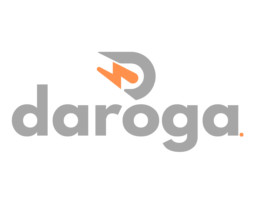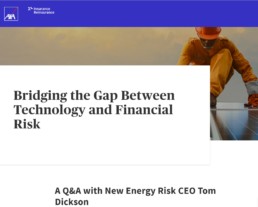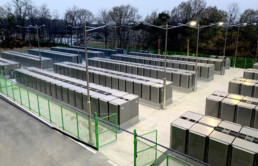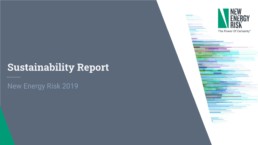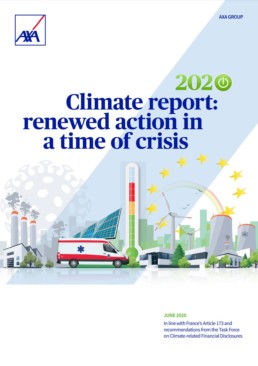NER Featured by AXA XL in Climate Risks Report
New Energy Risk is proud to be featured in AXA XL's Climate Risks report, Protecting What Matters. Read how NER is contributing to innovative insurance solutions for emerging climate risks in our spotlight on page 26. Download the full Climate Risk brochure here.
From our CEO, Tom Dickson, "Mitigating and reversing climate change is arguably the greatest opportunity for innovation ever seen by humanity. Technology
developers and their partners are stepping up to this enormous challenge with creative solutions that are both impactful and commercially viable. While new technology comes with risks, risk cannot stop us from creating a better future."
New Energy Risk Supports Carbon Capture Bill
As an insurance solutions provider who is contributing to the de-risking of $3B+ of carbon capture projects, we see how a longer development timeline and increased revenue certainty enabled by a 45Q extension and direct pay, coupled with increased credit values, would positively contribute to the financing and completion of these exciting projects.
Tom Dickson, CEO, New Energy Risk
Today, the US Senate introduced the Carbon Capture, Utilization, and Storage Tax Credit Amendments Act. Learn about the implications from the Carbon Capture Coalition's press release, and find the text of the Bill here.
###
New Energy Risk Helps Bring Fuel Cells to New York City
New Energy Risk (NER), a leader in customized performance insurance solutions for breakthrough technology projects, announced today that it has helped facilitate the purchase and financing of fuel cells in Staten Island, New York. The insurance solution developed by NER was a key component of the project’s financing and execution strategy.
The fuel cells totaling 12 MW in capacity across three sites were installed by joint venture including Daroga Power LLC. Project financing was in part provided by NY Green Bank, a division of the New York State Energy Research and Development Authority (NYSERDA), and New York’s $1 billion sustainable infrastructure investment fund. Daroga Power is poised to become the largest owner/operator of community distributed energy generation projects in New York City, with a total fuel cell and solar portfolio capacity of 20 MW.
NER, a member of the AXA XL group of companies, conducted a proprietary technoeconomic analysis, and then developed an insurance solution and monitoring schedule that addresses the operation of the fuel cells for up to 12 years. This is the first time NER has supported an investment by NY Green Bank.
“For years, we have been very pleased to support the expansion of fuel cells around the world,” said Tom Dickson, CEO of NER. “The installation of these fuel cells in New York City is another great example of infrastructure that provides reliable and cost-effective power, with the peace of mind that performance insurance provides.”
“Daroga Power is at the cutting edge of sustainable infrastructure serving New York City,” said Ory Moussaieff and David Matt, founders of Daroga Power. “With this insurance solution by New Energy Risk, we were able to close our financing and more than triple our fuel cell capacity. It would not have been possible without NER.”
“NY Green Bank is pleased to provide financing for fuel cell-powered community distributed generation projects, which benefit from the credit enhancement provided by NER’s performance insurance product,” said Alfred Griffin, president of NY Green Bank. “Our investments and activities support Governor Cuomo’s nation-leading goals to combat climate change, as outlined in the Climate Leadership and Community Protection Act, which requires that 70 percent of the State’s electricity come from renewable sources by 2030.”
###
About New Energy Risk
New Energy Risk is a pioneer of large-scale, breakthrough technology performance insurance solutions. Founded in 2010, the company provides complex risk assessment and serves as a bridge between technology innovators, financiers, and insurers. New Energy Risk has helped its customers unlock over $2 billion in financing for commercializing renewable energy and new technology deployments that address global challenges. Insurance policies are administered through New Energy Risk affiliate Complex Risk and Insurance Associates, LLC, CA License #0I24307. To learn more, visit www.newenergyrisk.com.
About AXA XL
AXA XL provides insurance and risk management products and services for mid-sized to large multinational companies, and reinsurance solutions to insurance companies globally. As a leading global insurer, AXA XL offers services in over 200 countries and territories for 90% of Fortune 500 businesses. To learn more, visit www.axaxl.com.
CEO Interviewed by AXA XL for Fast Fast Forward
New Energy Risk CEO Tom Dickson was interviewed by AXA XL, the #1 P&C commercial lines insurance platform serving clients in more than 200 countries, for Fast Fast Forward. This award-winning thought leadership platform provides articles, interviews and podcasts on a diverse range of topics, including technology, innovation and new thinking on risk.
Learn more about “the future of [our] custom technology risk solutions, and the crucial gap [we] fill in the marketplace,” plus a peek under the hood of our model and how diversity improves our team performance.
Read the complete interview here.
NER in The Economist
New Energy Risk is pleased to have been cited by The Economist in print (31-Oct-2020 edition) and online.
Greenbacks for greenery: Climate-conscious venture capitalists are back
"Specialised insurance firms, such as New Energy Risk... help financiers manage the risk" of "green innovators... attracting innovative financing methods."
Read the full article here (note: article may be behind The Economist's paywall).
New Energy Risk Helps Bring Fuel Cells to South Korea
New Energy Risk (NER), a leading provider of customized performance insurance solutions for breakthrough technology projects, announced today that it has helped facilitate the purchase and financing of fuel cells in South Korea. The insurance solution provided by NER is a key component of the project's financing and execution strategy.
The Bloom Energy fuel cells totaling 19.8 MW in capacity were installed by SK Engineering & Construction Co. Ltd. (SK E&C). The project is owned by SE Greenenergy Co., Ltd., in which Korea South-East Power Co., Ltd. (KOEN) holds an 85% stake and SK E&C holds the remaining 15%. This is the largest Bloom Energy project in South Korea to date, and Bloom Energy's second largest in the world.
This project reflects South Korea's growing interest in reducing carbon emissions, coupled with a power strategy emphasizing distributed power generation. The Bloom Energy fuel cells produce on-site power that is both clean and reliable. This is the first-ever solid oxide fuel cell project financed in Korea and will provide enough electricity to power approximately 43,000 homes.
NER, an affiliate of the global insurance group AXA XL, conducted a proprietary technoeconomic analysis, and then developed an insurance solution and monitoring schedule that addresses the operation of the fuel cells for 15 years. NER and Bloom Energy have worked together on prior performance insurance solutions in the United States.
"Our mission at New Energy Risk is to enable technologies that are addressing global challenges," said Tom Dickson, CEO of NER. "With this announcement of our first transaction in Korea, we are thrilled that our business itself can reflect that global perspective." He continued, "Bloom Energy is a longstanding client, and our relationship with Bloom is one that we're very pleased to support as the company expands its impact throughout the world."
"Technology innovation is a worldwide necessity and we are proud that New Energy Risk has helped bring the latest fuel cell technology to South Korea," said Tom Hutton, founder and chairman of New Energy Risk. "As NER grows, it further reflects our goal to expand the scope of insurable risks and develop high-value performance insurance solutions supported by deep technical domain and underwriting expertise."
###
CEO Interviewed by Norton Rose Fulbright
New Energy Risk CEO Tom Dickson was interviewed by Partner Todd Alexander of Norton Rose Fulbright, a global law firm offering full business law services, for the podcast Currents, which offers "in-depth discussions on the latest developments in project finance and renewable energy from a legal perspective."
Listen and learn about how New Energy Risk is "enabling project finance and bankability for new technologies through insurance. We go over the void that New Energy Risk is filling, how its product offerings evolve over time, how to scale energy storage, how carbon capture will compare to other industries, trends in capital markets and more."
Listen to Currents Episode 115 here.
NER Releases its 2019 Sustainability Report
New Energy Risk helps mitigate technology risk for innovators addressing global challenges in energy, pollution, and decarbonization. To date, over $2B of project capital has been deployed to scale and commercialize technologies via our proven platform that supports innovation.
We are proud of our clients, who are committed to solving some of the world's most pressing environmental issues. Collectively, they are reducing landfills and building a circular economy, reducing dependence on aging centralized power grids, reducing transportation’s dependence on petroleum, and preventing harmful greenhouse gas emissions.
View New Energy Risk's representative client impact today:
https://newenergyrisk.com/ner-sustainability-report-2019/
Want to learn more about our contribution to sustainability efforts? Read our affiliate AXA's Climate Report and find New Energy Risk on page 45.
AXA Publishes its 2020 Climate Report
We are proud to be featured on page 45 of AXA's 2020 Climate Report, recognizing our work with clients addressing some of the greatest environmental challenges facing the world today.
Below is AXA's original press release. Peruse to learn more about the important initiatives of our affiliates.
AXA Publishes its 2020 Climate Report
AXA announced the publication of its 4th Climate Report. This document describes AXA's responsible investment and insurance initiatives in the fight against climate change and measures the Group's progress in implementing the objectives of the Paris Agreement by 2050.
This report meets both a legal obligation established by the French law on energy transition for green and ecological growth, and the approach of the Taskforce on Climate-related Financial Disclosures (TCFD) that AXA has supported since its creation. The report's main indicator, the "warming potential," measures the impact of the Group's investments on global warming and its contribution to the fight against climate change.
At the end of 2019, AXA's "warming potential" was 2.8°C, down compared to 2018 (3°C) and below the market average (3.6°C). This evolution notably reflects the ambitious policy implemented by AXA to align its investments with the objectives of the Paris Agreement by 2050.
"AXA has been a pioneer in taking ambitious measures to combat climate change. Our Climate Report is an essential tool for measuring the effectiveness of the strategy we have implemented. It also shows that we must collectively pursue our efforts to achieve the objectives of the Paris Agreement, notably in the context of the post-Covid 19 economic recovery." Thomas Buberl, CEO of AXA
"We witness the ground-breaking engagement of AXA in addressing the risks of unabated global climate change. AXA has been in the front of global efforts for years, going beyond thought leadership into corporate action leadership." Christiana Figueres, Founding Partner, Global Optimism & Former Executive Secretary, UN Climate Change Convention (UNFCCC)
This 2020 Climate Report is available on AXA’s website at the following address: https://www.axa.com/en/press/publications/2020-climate-report
Lloyd's Features NER in Report: Renewable Energy Risk and Reward- Risks and Technologies
Renewable Energy Risk and Reward: Risks and Technologies, co-produced by Lloyd's, Imperial College London, and Oxford Energy Associates, features NER on page 10. Scroll to the bottom of this webpage to download the full report.
The text of the NER feature is included here:
Performance insurance solutions for breakthrough technologies
Innovation comes with risk, but that should not stop companies from paving the road to the future. New Energy Risk (“NER”), a California-based MGU, works with pioneers in the new-energy arena to support technology breakthroughs, advancing the critical projects needed to accelerate the transition to sustainable energy. To do so, NER structures customised performance insurance products that seek to mitigate technology risk for clients, and their customers and lenders as a result.
NER-developed policies are underwritten and issued by one of the affiliated insurance companies of AXA XL (S&P AA-) and administered by its subsidiary Complex Risk and Insurance Associates, LLC, licensed in California (#0I24307). Policies stand behind the client’s technology performance and ultimately protect project debt-lenders or end-customers from certain losses associated with the underperformance of an asset. By incorporating a double-trigger mechanism—wherein the technology has to perform below a pre-determined, conservative threshold, and the technology provider has to default on performance warranties that match or exceed the insurance terms—the policy seeks to align the interest of developers, customers, and investors with the insurer to provide technology risk transfer to the insurer, without introducing moral hazard or misaligned incentives.
With a team of scientists and insurance professionals, NER has developed a data-driven methodology for evaluating technical risk, bringing a new class of diversified risk to the insurance market. The company’s proprietary modelling uses Monte-Carlo analysis techniques that simulate a range of potential project outcomes to assess uncertainty around performance and reliability of a client technology, including the impact on relevant economics. The result is well-structured and profitable packages delivered in conjunction with insurance partners, and client access to financing that is minimally dilutive and optimally priced.
In only five years, NER’s clients have already deployed over $2 billion in capital, supported by AXA XL’s insurance companies, and their global reinsurers, including various Lloyd’s syndicates. NER’s diverse and global client-base represents a wide range of technologies and industries, from fuel cells and waste-to-value to nuclear medicine, all focused around the mission of mitigating global challenges through smart business. Clients include:
- Fulcrum BioEnergy, a trash-to-biofuel developer building their first commercial facility in the US;
- Bloom Energy, the leading supplier of solid-oxide fuel cells for reliable, resilient, and cost-effective on-site electricity;
- RES Polyflow, an innovative plastic waste-to-fuel technology company building a recycling project in the US; and
- SHINE Medical Technologies, a development-stage company working to become the world’s leading producer of medical isotopes.
Learn more about New Energy Risk at www.NewEnergyRisk.com
###


